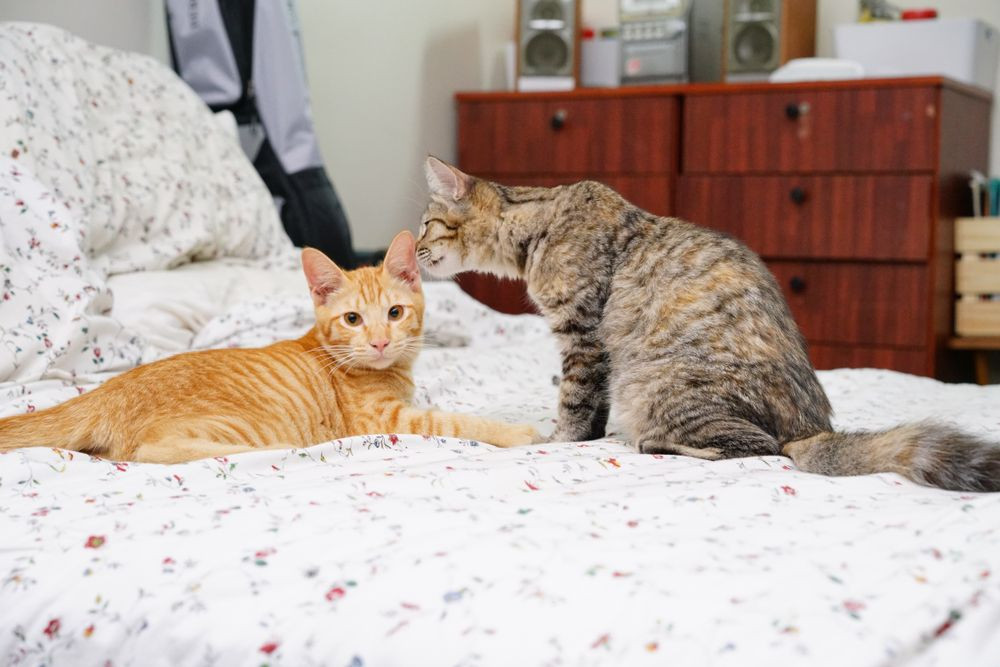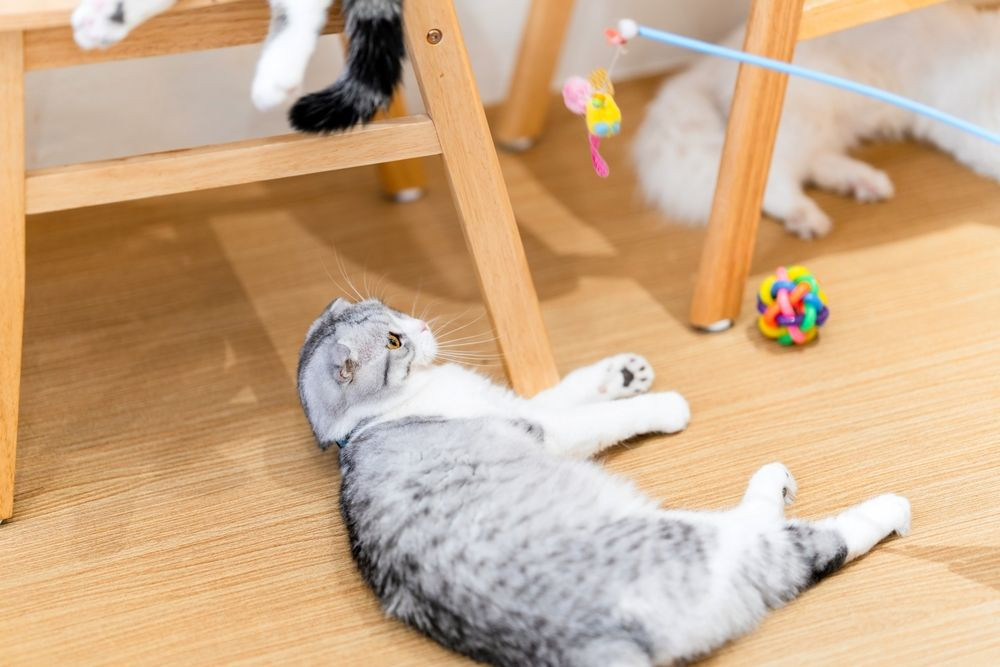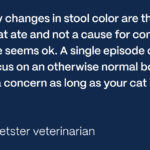Do you ever wonder why your feline friend seems so fascinated by your ears? Why Do Cats Like Earwax? The attraction is often due to its protein-rich composition and appealing smell. At solcat.net, we delve into this quirky feline behavior, exploring the reasons behind it and offering solutions to keep your kitty happy and healthy. Explore our articles on feline grooming habits, cat communication, and feline nutrition for a deeper understanding of your cat’s behavior and well-being.
1. What Exactly Is Earwax, And Where Does It Come From?
Earwax, surprisingly, isn’t as unappealing as many think. It’s a combination of secretions from special glands in the outer ear canal, along with shed skin cells.
1.1. The Components of Earwax
Earwax, also known as cerumen, is produced by two types of glands in the ear canal: ceruminous and sebaceous glands. According to research, ceruminous glands produce a modified sweat that fights bacteria and fungal infections, while sebaceous glands secrete an oily substance. Dead skin cells (keratinocytes), hair, fatty acids, and a small amount of cholesterol are also part of the mix. This blend results in a protein and energy-packed substance that can be quite tempting to cats.
1.2. The Purpose of Earwax
Earwax serves several important functions. It helps to:
- Protect the ear canal from infections
- Keep the skin of the ear canal moisturized
- Trap dirt, dust, and other debris
2. Why Do Cats Find Earwax So Appealing?
Several factors contribute to a cat’s fondness for earwax.
2.1. The Allure of Taste
Cats are obligate carnivores, meaning their diet must consist primarily of meat to meet their nutritional needs. Earwax contains protein and fats, making it a tempting treat for cats seeking these essential nutrients. A study published in the Journal of Veterinary Science confirms that a meat-based diet, rich in protein, offers numerous health benefits for cats.
2.2. The Power of Scent
Cats have an exceptional sense of smell, far surpassing that of humans. Their olfactory system allows them to detect new protein sources, including earwax, with ease.
 cat smelling another cat
cat smelling another cat
Alt Text: A ginger cat smelling another cat’s ear intently, showcasing feline’s keen sense of smell and its role in identifying scents, possibly including earwax.
2.3. Grooming Habits and Bonding
Grooming is a crucial behavior for cats, serving various purposes, including hygiene, bonding, and communication. If your cat grooms you, it’s a sign of acceptance and affection. Allogrooming, the act of grooming other members of their social group, is common among cats. Grooming each other’s ears can provide reassurance and reinforce social bonds, mimicking the way mother cats groom their kittens. It can also be a way to establish dominance within a cat colony.
2.4. A Combination of Factors
The attraction to earwax is likely a combination of taste, smell, and grooming behavior. The tasty and protein-rich nature of earwax, combined with the comforting act of grooming, makes it an appealing habit for many cats.
3. Is Eating Earwax Normal Feline Behavior?
Yes, in most cases, it is perfectly normal for cats to be attracted to earwax. It’s a natural behavior driven by their instincts and senses.
3.1. When to Be Concerned
While occasional earwax consumption is usually harmless, there are situations where it could indicate an underlying problem:
- Sudden Increase in Interest: A sudden and intense interest in earwax, especially in conjunction with other symptoms, could signal an ear infection or other health issue.
- Ear Infections: Ear infections can alter the smell of earwax, making it more appealing to cats. If you notice your cat excessively licking or grooming another animal’s ears, it’s worth investigating for potential ear problems.
4. Potential Risks Associated With Earwax Consumption
While generally safe, there are some risks to be aware of.
4.1. Ear Medications and Cleaning Products
If you use ear cleaners or medications, prevent your cat from licking the treated ear. Ingesting these products can cause nausea, drooling, and other adverse reactions.
4.2. Foreign Objects
Items like cotton swabs and earplugs can pose a choking hazard or cause intestinal blockages if swallowed. Always dispose of these items properly and keep them out of your cat’s reach.
5. Signs of Ear Infections and Other Ear Problems
Recognizing the signs of ear problems is crucial for ensuring your cat’s well-being.
5.1. Common Symptoms
- Redness and inflammation of the ears
- Unpleasant odor
- Frequent head shaking
- Tilting the head to one side
- Excessive scratching or rubbing of the ears
5.2. When to Consult a Vet
If you observe any of these symptoms, seek veterinary attention promptly. A veterinarian can perform a thorough examination and recommend appropriate treatment.
6. How to Discourage Earwax-Eating Behavior
If you’re uncomfortable with your cat’s earwax-eating habit, there are several strategies you can try.
6.1. Distraction and Redirection
Redirect your cat’s attention toward more desirable activities, such as playing with toys or engaging in puzzle feeders. Provide them with alternative sources of enrichment and stimulation.
6.2. Addressing Underlying Issues
If the behavior is linked to an ear infection or other health problem, addressing the underlying issue is essential. Work with your veterinarian to diagnose and treat any medical conditions contributing to the behavior.
6.3. Environmental Management
Ensure that potential hazards, such as cotton swabs and earplugs, are kept out of your cat’s reach. Store these items in secure containers or dispose of them immediately after use.
7. Understanding Feline Grooming Habits
Grooming is a fundamental aspect of feline behavior, serving various purposes.
7.1. Types of Grooming
- Self-Grooming: Cats groom themselves to maintain cleanliness and remove loose fur.
- Allogrooming: As mentioned earlier, allogrooming involves grooming other members of their social group.
- Grooming as Communication: Cats use grooming to communicate affection, establish social bonds, and reinforce hierarchy.
7.2. The Importance of Grooming
Grooming helps cats regulate their body temperature, distribute natural oils, and remove parasites. It also provides mental stimulation and reduces stress.
8. Nutritional Needs of Cats
Understanding the nutritional needs of cats is crucial for ensuring their health and well-being.
8.1. Obligate Carnivores
As obligate carnivores, cats require a diet rich in animal protein. Protein provides essential amino acids that cats cannot synthesize on their own.
8.2. Essential Nutrients
- Protein: Crucial for muscle development, tissue repair, and overall health.
- Fats: Provide energy and support healthy skin and coat.
- Vitamins and Minerals: Essential for various bodily functions, including immune system support and bone health.
8.3. Choosing the Right Food
Select high-quality cat food that meets your cat’s specific nutritional needs. Look for foods that are formulated for their age, activity level, and any specific health conditions they may have.
9. The Role of Smell in Feline Behavior
Smell plays a significant role in various aspects of feline behavior.
9.1. Communication
Cats use scent to communicate with each other, marking their territory, identifying individuals, and conveying information about their reproductive status.
9.2. Food Preferences
Smell influences a cat’s food preferences, helping them locate and identify potential food sources.
9.3. Environmental Awareness
Cats rely on their sense of smell to navigate their environment, detect danger, and locate familiar objects and individuals.
10. Addressing the Underlying Causes
Why is your cat attracted to earwax? Here are a few underlying causes to address.
10.1. Medical Conditions
Underlying medical conditions like ear infections can trigger increased interest in earwax.
10.2. Behavioral Issues
Some cats may develop obsessive behaviors that lead to excessive licking or grooming.
10.3. Environmental Factors
Stressful or boring environments can also contribute to unwanted behaviors.
11. Expert Opinions on Feline Behavior
According to Dr. Sarah Wooten, DVM, CVJ, a veterinary expert at Pumpkin Pet Insurance, “Cats explore the world with their mouths.” It’s part of their investigatory repertoire.
11.1. Cornell Feline Health Center
The Cornell Feline Health Center provides valuable resources and information on feline health and behavior. Their website offers articles, videos, and expert advice on a wide range of topics. According to research from the Cornell Feline Health Center, in July 2025, providing stimulating toys and regular playtime can help redirect a cat’s attention away from unwanted behaviors.
11.2. American Animal Hospital Association (AAHA)
The American Animal Hospital Association (AAHA) offers guidelines and resources for pet owners, including information on feline behavior and care. They emphasize the importance of providing cats with a stimulating and enriching environment.
12. The Importance of Environmental Enrichment
Creating a stimulating and enriching environment is crucial for a cat’s physical and mental well-being.
12.1. Interactive Toys
Provide a variety of interactive toys that encourage cats to play and explore.
12.2. Scratching Posts
Offer scratching posts to satisfy their natural scratching instincts.
12.3. Climbing Structures
Provide climbing structures to allow cats to climb and explore their surroundings.
13. Q&A About Cats and Earwax
Here are a few frequently asked questions.
13.1. Is Human Earwax Good for Cats?
Human earwax contains protein and fatty acids, which could be seen as a snack for your kitty.
13.2. Is It Safe for Cats to Eat Earwax?
It should not cause any issues, but be aware if your kitty is licking an ear that has been cleaned.
13.3. Is It Okay for My Cat to Groom Me?
It can be a very bonding experience, but cat saliva contains bacteria, so avoid it if you have open wounds.
13.4. How Can I Tell if My Cat Has an Ear Infection?
Watch for symptoms like redness, swelling, discharge, odor, head shaking, or scratching at the ear.
13.5. What Should I Do if I Suspect My Cat Has an Ear Infection?
Schedule a visit with your veterinarian for diagnosis and treatment.
13.6. Can Ear Mites Cause Increased Interest in Earwax?
Yes, ear mites can cause a buildup of debris and inflammation, making the ear more attractive to cats.
13.7. How Can I Prevent My Cat From Eating Earwax?
Redirect their attention with toys, provide environmental enrichment, and address any underlying medical conditions.
13.8. Are There Any Specific Toys That Can Help Redirect My Cat’s Attention?
Puzzle feeders, interactive toys, and textured licking mats can be effective in redirecting their attention.
13.9. Is It Normal for Cats to Groom Each Other’s Ears?
Yes, allogrooming is a normal behavior that helps cats bond and reinforce their social hierarchy.
13.10. Can Diet Affect My Cat’s Interest in Earwax?
A diet lacking essential nutrients may lead to increased interest in alternative sources of protein and fat.
14. The Benefits of a Balanced Feline Diet
A balanced diet is essential for maintaining your cat’s health and preventing nutritional deficiencies.
14.1. High-Quality Protein
Ensure that your cat’s diet contains high-quality animal protein to meet their nutritional needs.
14.2. Essential Fatty Acids
Include sources of essential fatty acids, such as omega-3 and omega-6, to support healthy skin and coat.
14.3. Proper Vitamin and Mineral Balance
Provide a diet that is balanced in vitamins and minerals to support overall health and well-being.
15. Understanding Feline Communication
Cats communicate through a variety of vocalizations, body language, and scent marking.
15.1. Vocalizations
Cats use meows, purrs, hisses, and other vocalizations to communicate with humans and other animals.
15.2. Body Language
Body language, including ear position, tail movements, and posture, plays a significant role in feline communication.
15.3. Scent Marking
Cats use scent marking, such as scratching and urine spraying, to mark their territory and communicate with other cats.
16. The Importance of Regular Veterinary Checkups
Regular veterinary checkups are essential for maintaining your cat’s health and detecting potential problems early.
16.1. Physical Exams
Veterinarians perform physical exams to assess your cat’s overall health and identify any abnormalities.
16.2. Vaccinations
Vaccinations help protect your cat from infectious diseases.
16.3. Parasite Control
Parasite control measures, such as deworming and flea prevention, are essential for maintaining your cat’s health.
17. The Role of Genetics in Feline Behavior
Genetics play a significant role in shaping feline behavior.
17.1. Breed Predispositions
Different cat breeds may exhibit different behavioral traits.
17.2. Individual Variation
Even within the same breed, individual cats can vary significantly in their behavior.
17.3. The Influence of Environment
While genetics play a role, environment and experiences also influence a cat’s behavior.
18. Explore Feline Insights on Solcat.net
If you’re intrigued by your cat’s quirks and want to understand them better, visit solcat.net.
18.1. Discover More About Feline Habits
Explore a wide range of articles about feline habits, behaviors, and health tips.
18.2. Connect with a Community of Cat Lovers
Join our community of cat enthusiasts in the USA! Share stories, ask questions, and connect with fellow cat lovers in Seattle and beyond.
Conclusion
While a cat’s penchant for earwax might seem strange, it’s often a perfectly normal behavior driven by taste, smell, and grooming instincts. By understanding the reasons behind this behavior and taking appropriate measures, you can ensure your cat’s health and happiness. If you’re curious to learn more about feline behavior and care, visit solcat.net for valuable resources and expert advice. Remember, addressing any concerns with your veterinarian is always the best approach to maintaining your cat’s well-being. Visit solcat.net to deepen your understanding of feline behavior, explore our community, and find the resources you need to provide the best possible care for your beloved cat. Join us today and discover the fascinating world of feline companionship!
Address: 950 Alaskan Way, Seattle, WA 98104, United States
Phone: +1 (206) 386-4000
Website: solcat.net
 cat playing with toys
cat playing with toys
Alt text: A playful cat batting at a colorful toy, showcasing the importance of environmental enrichment and interactive play in redirecting feline behaviors, such as earwax consumption, towards more stimulating activities.


